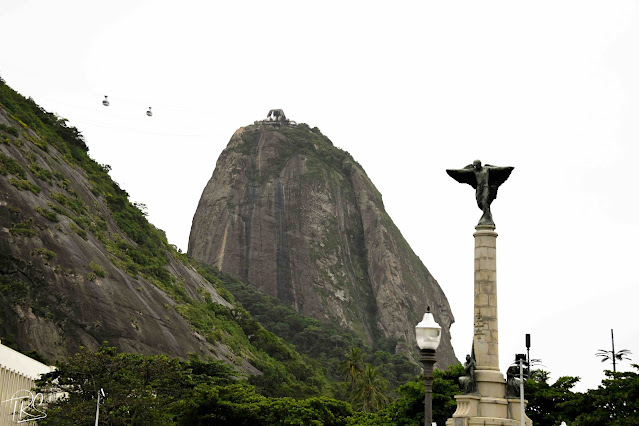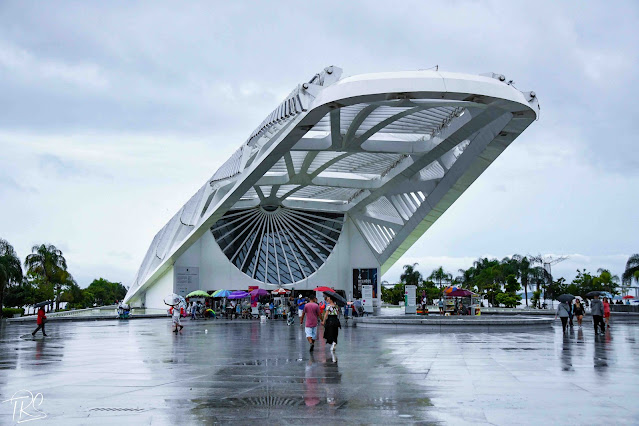The French, on a visit to establish a new “France Antartique” colony, were quite excited to see the waters on a January summer morning. They named it “The River of January”. Upon deeper inquiry, it emerged that the water was not a river and is a bay, an inlet in the Atlantic Ocean. But the name sounded good and they kept the name: Rio de Janeiro.
The Portuguese, who took over from French, liked the city even better. A convenient port to take out sugar and gold from Brazil, their colony, to Portugal. Rio served as the capital of Brazil for 300 years until Brasilia replaced Rio in 1960.
Rio is the second largest city in Brazil (after Sao Paulo) with area 1,200 square km (1.7 times Singapore) 6.7 million population (1.2 times Singapore) and with GDP $ 106 billion pa (0.3 times Singapore).
Rio has 51% European and 49% African mix in population.
Rio has several billionaires, and more than 130,000 millionaires living in swanky modern urban suburbs in Barra da Tijuca. Rio has more than 750 plus “havelas” (slums) housing around 22% of its population.
Rio is a city between mountains and sea.
The best place to start a visit to Rio is atop Sugarloaf mountain. The Pao de Azucar is so named since it resembles the shape of sugarloafs that were the main exports from Brazil to Portugal during the colonial era. You need take two cable car rides: one from ground to Urca Hill and another from Urca Hill to Sugarloaf. (The cable cars offer a scenic ride and became popular thanks to "Moonraker". the Bond movie). From atop Sugarloaf mountain you get a 360 degree view of Rio, the Guanabara Bay, and...the tall and imposing Cristo Redentor statue atop the Corcovado mountain - an icon for Rio as Eiffel Tower is to Paris, and Rio’s famous beaches!
Sugarloaf mountain and Urca Hill
The Cable car ride from Urca hill to Sugarloaf mountain
View from Sugarloaf: Cristo Redentor atop Corcovado mountain
View from Sugarloaf: Downtown Rio and Guanabara Bay
View from Sugarloaf: Copacabana Beach
You also get to see some interesting wildlife atop Sugarloaf mountain.
Atop Sugarloaf: Frigate bird
Atop Sugarloaf: Marmoset monkey
The best way to see Cristo Redentor is from air. A scenic flight gets you a ten minutes view of the Redeemer presuming the peak is not clouded. We started on a cloudy day but He was kind enough to get us a brief opening to catch a bird’s eye view.
The Cristo Redentor statue is on the 700 metres peak of Corcovado mountain in Tijuca Forest. The Redeemer is 30 metres tall and his arms stretch 28 metres. The statue was built in 1931 with public donations as a counter to the perceived godlessness in the city! The original pale stones are in short supply and all repairs are being replaced with stones of a slightly darker hue.
Cristo Redentor atop Corcovado mountain as seen from heli
Cristo Redentor atop Corcovado mountain as seen from heli
The Corcovado mountain (“Hunchback mountain” in Portuguese) has a rack railway and a 4 km walking trail to get you to the top.
Rack railway station to the top of Corcovado mountain
Cristo Redentor as seen from its base atop Corcovado mountain
Brazil attracts millions of visitors to its beaches; about 50 km in all of white sand and blue waters with blue sky and bright sun.
Copacabana beach is probably the most popular one. It hosts a spectacular new year’s eve party with fireworks that is attended by more than two and a half million revellers. The four km stretch is quite wide, has fine sand, and offers spectacular visuals. The strip adjacent to the beach is one of the most densely populated areas in the world.
Copacabana beach
Copacabana beach as seen from our hotel
Ipanema beach is right next to Copacabana. It is cleaner, safer, and enjoys a better location. The beach has been made quite famous by the song “Girl from Ipanema”.
Ipanema beach
Leblon beach follows Ipanema. Leblon is more tranquil and is a favourite for Cariocas (the local name for residents of the city).
Leblon beach
Barra da Tijuca beach follows Leblon. Barra da Tijuca is an upper class beach with a very long stretch of white sand; wider, longer, and whiter than all other beaches in Rio. It is less crowded as well.
Barra da Tijuca beach
Between Leblon and Barra da Tijuca are the “Two Brothers” mountains with one favela at their common base.
Two Brothers Mountains
Havela in Two Brothers Mountains
The Estadio do Maracana is a crown jewel ball park stadium in Rio. In the past, it could seat 199,000 fans. After a rebuilding, it now can house 80,000 fans. The stadium hosted the opening and closing ceremonies of Rio Olympics in 2016 and the FIFA World Cups of 1950 and 2014. (Who would not have heard of the 1950 finals when an underdog Uruguay upstaged big ticket Brazil and walked away with the cup much to the disappointment of the 199,000 people in the stadium!).
Estadio do Maracana, seen from heli
The Stadium celebrates Hilderaido Luiz Bellini, who captained Brazil when it won the World Cup in 1958!
Estadio do Maracana: Hilderaido Luiz Bellini, World Cup 1958
Rio celebrates the biggest carnival in the world that brings over 2 million people each day to celebrate in its streets. The Carnival begins on the Friday preceding Lent and ends on Ash Wednesday. During the period Rio makes merry with parades set to music and dance in various places.
The most famous parades are staged at the purpose built Sambadrome - a 700 metre stretch for performers that can be watched by 90,000 people seated on either side of the stretch. Rio has more than 200 samba schools classified into five leagues. The schools compete and the winners perform on the last two days.
We were lucky to be in Rio during the final days of the Carnival and managed to watch the winners parade in Sambadrome. The beats, music, and dance were excellent. Despite a minor drizzle, one can see most folks shaking hips and legs.
Carnival at Sambadrome: Dancer of a Samba school
Carnival at Sambadrome: Dance of a Samba school
Carnival at Sambadrome: Parade of a Samba school
Carnival at Sambadrome: Parade of a Samba school
However, Rio could do better to organise return in the wee hours of the morning. The arrangements were chaotic. One can learn a trick or two from the excellence with which Phuket arranges return to lodging well past midnight after a Fantasia show.
Rio’s marine aquarium is the largest in South America. The skeleton of a humpback whale in the entrance foyer is quite awesome giving an idea of how large the mammal is.
AquaRio: Skeleton of a Humpback whale
AquaRio: One of the 28 tanks in its five floors
The Olympic boulevard is a pleasant walk between AquaRio and the Museu do Amanha. It has the largest street art mural in the world. Artist Eduardo Kobra has painted a breathtaking graffiti stretching 32,000+ square feet depicting various ethnics including a Tajapo boy from Brazil, a Mursi woman from Ethiopia, a Kayin woman from Thailand, a Supi man from Northern Europe, and a Huli man from Papua New Guinea. Together they represent humanity’s common ancestors, the indigenous people of America, Asia, Europe, Africa, and Oceania.
Olympic Boulevard
At the end of Olympic Boulevard is the Museu do Amanha (“Museum of Tomorrow”) a renown science museum in Rio. The museum is built right next to the waterfront at pier Maua. The Museum is housed in a building that uses sunlight to the maximum.
Museu do Amanha at Maua Square
Museu do Amanha
The museum focuses on preserving a sustainable future for mankind with clever and responsible co-existence with our ecosystem.
What better way to communicate this than through a traditional Churinga, the centrepiece of its exhibits.
Museu do Amanha: Churinga
Museu do Amanha: Churinga, the message for tomorrow































No comments:
Post a Comment
Please leave your comments here.